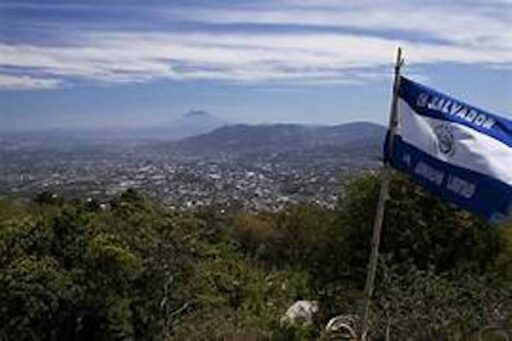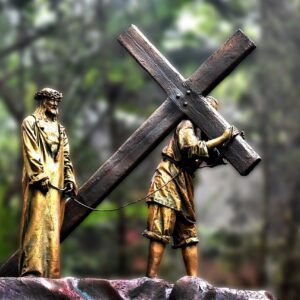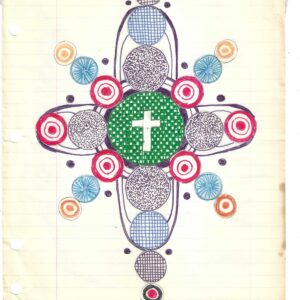Carolyn Forché is now a celebrated American poet. But she was far from that on the day in the late 1970s when a car pulled up outside the remote California beach house that she was renting. The driver idled the engine, then finally turned it off. At that, Forché, alone in the house and busily typing, noticed the sudden silence and became apprehensive. In her gripping memoir What You Have Heard is True, she narrates what happened next—as she does all that happened afterwards—as if she were, like us, meeting her experience for the first time:
The vehicle that was not turning around was a white Toyota Hiace. From the window I could see a man get out and sling a tote bag over his shoulder, with papers escaping from the top. Then the back panel door swung open, and two very young girls climbed down and stood beside him. I remember assuring myself that an ax murderer probably wouldn’t travel with two young girls. When the man looked up at my window, as if he knew that I was there, I moved away and cowered against the wall. The dust-covered Hiace had El Salvador license plates.
How this stranger, whose name we soon learn is Leonel Gómez Vides, inspired her memoir is Forché’s subject. But Leonel never becomes the book’s center. True, Forché does tell us a lot about him, the information accumulating bit by bit as she herself becomes aware of it. He is a coffee farmer in El Salvador, a champion marksman, a motorcycle racer, a painter, an expert on Formula One cars, an historian of military strategy, an advisor to many in El Salvador, including peasants, politicians, Carmelite nuns, Catholic priests—anyone and everyone struggling to survive during El Salvador’s 1979-1992 civil war.
Leonel exists in Forché’s book, as he did in her life, not to call attention to himself, but to call Forché’s attention elsewhere. He exists from the start as a mysteriously directing force, didactic but at the same time cryptic, ever-present but at the same time elusive, demanding but at the same time frustratingly hands-off. He is Virgil to Forché’s Dante—but before Forché even knows she needs guidance of this sort.
And like Virgil, Leonel possesses the power of wisdom tempered by experience. A power that can feel miraculous at times. For example, Leonel’s first inspirational miracle is that he is able to persuade Forché to open her door to him. But perhaps his greatest miracle occurs right afterward, as soon as he’s inside, when he informs her of the mission that has brought him all the way from El Salvador—and makes this announcement without causing her to panic or call to the police. “We have work to do,” he says, all business, as he spreads maps of El Salvador on her kitchen table. She is, it seems, to drop all she’s doing in order to come to El Salvador and—to use Leonel’s favorite verb—“see.” And then to help others to “see” through her seeing.
And that is what Forché does, or what she learns to do. For “seeing,” as Leonel makes clear to her, by precept and example, amounts to far more than looking around. It means witnessing. That is why the book’s subtitle is A Memoir of Witness and Resistance. To come to El Salvador—to come anywhere in the world, or, more accurately, to be anywhere in the world—is not only to register accurately what one sees, and not only to convey how one sees it (how one assesses it, how one judges it). It is to turn seeing into witnessing, and witnessing into advocacy. And most importantly, to inspire a similar transformation in others.
Becoming a witness and advocate is not an easy path for Forché, any more than it was for Dante. She resists Leonel’s appeal at first but then almost grudgingly goes along with it. Why her reluctance? She speaks Spanish haltingly, knows little of El Salvador, and she’s not a journalist. And, most disqualifying of all, perhaps, she’s that most private sort of artist, a poet. Of what use would her gift be in a mission—as becomes increasingly clear to her—of arousing awareness among North Americans of the disaster unfolding in a distant, little understood Latin American country?
But Leonel brushes off these objections, especially the one about poetry. It was on the strength of Forché’s translation of poems by Leonel’s cousin Claribel Alegría that he has singled her out. And also on the strength Leonel’s respect for poets’ capacity to speak to the public as well as the private heart—a power of poetry still honored in Latin America, though rarely so now in the North. (A rare recent example: Amanda Gorman’s “The Hill We Climb,” which Gorman recited at President Biden’s inauguration.)
So Forché yields, and goes south.
On one level, What You Have Heard is True is her eye-witness account of her visits to El Salvador during the months before Bishop Oscar Romero’s assassination on March 24, 1980. But it is not through a journalist’s eye that she sees the world. It is as a poet that she speaks. She invites us to learn to see through her own process of learning to see—rigorously editing out afterthoughts, second-guessing, fantasizing, editorializing. Her prose is lean, restrained, tuned to the moment and to the senses. This is experience seen through a strict poetic sensibility: sifted, distilled, concentrated. Towards the end of the book, Forché intersperses “Notes in Pencil,” images caught on the fly, shattering bursts of detail and insight. All for the reader to assess as possible alternative paths, reflective and spontaneous, for his or her own witness of whatever world an unexpected visitor might invite the reader to enter.
A week before Bishop Romero’s assassination in March,1980—also a week before Forché’s departure from El Salvador for the last time during the lead-up to the war—she shares lunch with the Bishop at the home of the Carmelite Sisters. She remembers
his wish that I speak about the sufferings of the poor, the repression, and the injustice, that I would say what I had seen, and when I told him that I didn’t think I could do this, that I would have no opportunity, that I was only a poet and not a journalist and not a public figure, he assured me that the time would come for me to speak, and that I must prepare myself and that I could do this best through prayer.
A poet does not adhere to a journalist’s deadline. Forché’s speaking came slowly. She didn’t begin writing What You Have Heard is True till nearly twenty-five years after that final conversation with Bishop Romero. The book then went through four drafts over the next fifteen years, and was finally published in 2019. Leonel had died in 2009. But his inspiration lived and lives on, gradually maturing, continuing to teach her to see so that others may see, a mission that was and is ongoing, never complete, often challenging, always bearing fruit.
After getting his PhD in English literature, George Dardess taught close reading to his own students until his retirement. Since then he has been ordained a Deacon in the Roman Catholic Church and written several books on Muslim-Christian relations. He has also created the graphic novel Foreign Exchange





